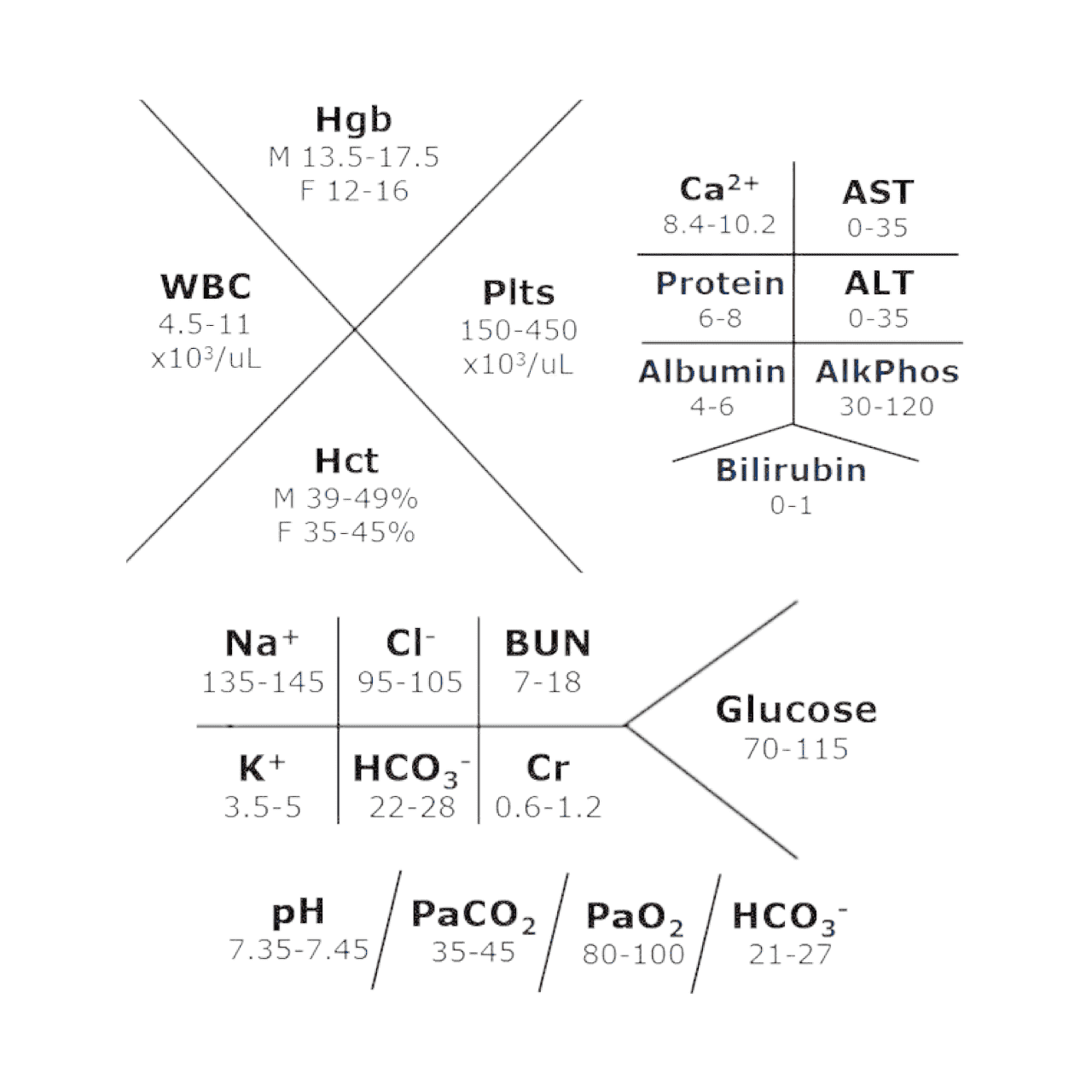When caring for newborns, healthcare professionals rely on a range of vital information to ensure the well-being of these tiny patients. One crucial aspect of neonatal care is understanding and interpreting newborn lab values. Thus, explore Understanding ATI Newborn Lab Values.
The Assessment Technologies Institute (ATI) provides valuable resources for healthcare students and professionals. These include comprehensive guides on newborn lab values. This article explores the essential ATI newborn lab values, why they are crucial, and how to interpret them correctly to provide the best care for newborns.
Nursing Test Banks
Comprehensive Predictor Exams
How can Naxlex help?
Naxlex is a reliable and trusted resource that helps nursing students pass their exams. We provide practice exams, tailored preparation material, and a live tutoring option in your weak areas. Thus, we guarantee a 90% pass rate or your money back if you pass your assessments with 85% but fail the official exams. Sign up for our premium package today!

Why are Newborn Lab Values Important?
Newborn lab values are essential for several reasons. They provide healthcare providers with valuable insights into a newborn's health, helping them make informed decisions regarding treatment and care.
These lab values help assess a baby's overall health, detect potential issues early, and monitor their progress over time. Here are some of the key reasons why newborn lab values are crucial:
Early Detection of Health Issues: Newborn lab values can help identify any health problems in the early stages. This allows for timely intervention and treatment.
Assessment of Vital Organs: These values provide information about the functioning of vital organs like the heart, lungs, liver, and kidneys, allowing healthcare providers to monitor their health.
Monitoring Treatment Efficacy: For newborns receiving medical treatment, lab values can track the effectiveness of the interventions and guide adjustments as needed.
Prevention of Complications: Timely identification of abnormalities in lab values can help prevent complications and ensure the baby's well-being.
Now, let's delve into some of the critical ATI newborn lab values:
Complete Blood Count (CBC)
A Complete Blood Count (CBC) reffers to a blood test that measures various blood components. Thus. the test provides essential information about their overall health and can help detect various conditions in newborns.
Hemoglobin (Hb): Hemoglobin reffers to a protein in red blood cells. The protein carries oxygen throughout the body. Low hemoglobin levels can indicate anemia, while high levels may suggest dehydration.
Hematocrit (Hct): Hematocrit measures the percentage of red blood cells in the blood. Thus, abnormal levels may indicate blood disorders or dehydration.
White Blood Cell Count (WBC): WBC count assesses the body's immune system. Thus, elevated levels may indicate an infection, while low levels can result from immune system disorders.
Platelet Count: Platelets are vital components of the blood responsible for blood clotting. Thus, abnormal platelet counts may indicate bleeding disorders or infections.
Metabolic Panel
The metabolic panel is a group of blood tests that assess the functioning of vital organs and the body's chemical balance.
Glucose: Glucose levels help monitor blood sugar. Thus, abnormal levels can indicate diabetes or other metabolic disorders.
Sodium (Na): Sodium levels can indicate dehydration, kidney problems, or other electrolyte imbalances.
Potassium (K): Potassium levels are essential for muscle and nerve function. Therefore, imbalances can lead to heart and muscle problems.
Calcium (Ca): Calcium is crucial for bone and muscle health. Thus, abnormal levels can impact newborn development.
Bilirubin Levels
Bilirubin is a yellow pigment created when red blood cells break down. High bilirubin levels can lead to jaundice, a common condition in newborns. Monitoring bilirubin levels is crucial to prevent complications associated with jaundice.
Coagulation Profile
The coagulation profile assesses the blood's ability to clot. Newborns can be at risk of bleeding disorders, and this profile helps healthcare providers monitor their clotting ability.
Prothrombin Time (PT): PT measures the time it takes for blood to clot. Therefore, abnormal PT values can indicate clotting disorders.
Activated Partial Thromboplastin Time (aPTT): aPTT assesses the blood's clotting ability and can help diagnose clotting disorders.
Arterial Blood Gases (ABG)
Arterial blood gases provide information about a baby's respiratory and metabolic health. They measure the oxygen and carbon dioxide levels in the blood and the blood's pH.
Interpreting ATI Newborn Lab Values
Interpreting newborn lab values requires a thorough understanding of the reference ranges, clinical context, and the baby's individual condition. ATI provides valuable resources and guidelines for interpreting these values correctly.
Here are some key tips for interpreting ATI newborn lab values:
Know the Reference Ranges: Familiarize yourself with the normal reference ranges for each lab value in newborns. These ranges may differ slightly from those in adults.
Consider Clinical Context: Interpret lab values in the context of the baby's overall health, medical history, and current clinical condition. Abnormal values may be more significant if they deviate significantly from the reference range.
Monitor Trends: Don't rely on a single lab value. Instead, monitor the trends over time. Consistent abnormalities or significant changes can signal underlying issues.
Consult with Healthcare Team: Collaborate with other healthcare professionals, such as neonatologists and pediatricians, to ensure a comprehensive assessment of the newborn's health.
Want to pass your exam on your first try?
Studying for your TEAS exams is stressful and time-consuming. The course adds to a student’s existing stress. However, Naxlex provides engaging and interactive learning materials like videos, quizzes, and study guides to help you have a better learning experience. Our questions are 90% similar to the official exams, and we guarantee that you’ll pass on your first try. Try our premium package today!
Conclusion: Understanding ATI Newborn Lab Values
Understanding ATI newborn lab values is vital for providing high-quality care to neonatal patients. These lab values offer insights into a newborn's overall health, help detect potential issues early, and guide treatment decisions. Thus, by staying informed about reference ranges and interpreting these values in the clinical context, healthcare providers can give the best possible care for newborns, setting them on a healthy and happy life.
Start your journey with us today
Join 1000+ Nursing Students
Powerful learning and clinical tools combined into one platform. The Naxlex Knowledge and Qbanks give you instant and on-the-go nursing knowledge and guidance.




